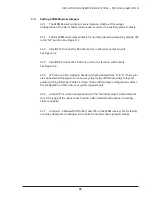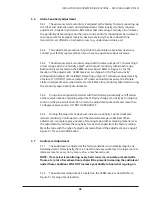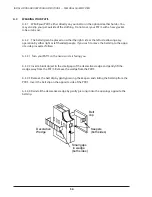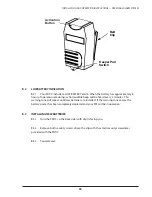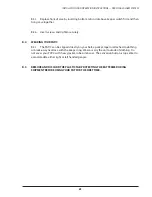
49
INSTALLATION AND OPERATION INSTRUCTIONS — PERSONAL ALARM SYSTEM
7.0
TROUBLESHOOTING
7.1
Systematic Testing
7.1.1
Problems sometimes occur due to equipment failures. However, in most cases
problems are caused by human or installation related items. Several of these items are:
Shipping damage
Disturbed wiring or connections
Incorrect connections
Physical damage
7.1.2
Always look for the simplest problem first. For example, always check for power
supply voltages before starting any further circuit testing.
7.1.3
When approaching a system malfunction, look first for a related activity that
could have caused the problem. This will help you go directly to possible problem
areas and/or obtain more accurate factory assistance. Examples are:
Recent maintenance actions or installations of other equipment in the same area or
equipment rooms.
Water or lightning damage.
7.1.4
Factory customer assistance is available to help you find and correct system
errors. It is important that you fill out the tables contained in this manual during your
installation so they can be Faxed to the factory at (
6
1
3
)
839
-
5830
if you are in need of
assistance.
7.2
Problem Identification and Resolution
7.2.1
Table 7-1 is provided to help you find and resolve system defects. Before
proceeding to make more detailed tests proceed as follows:
7.2.1.1 Use the self-test function first, if available.
7.2.2.2 Before proceeding further, check all power supply voltages at central
power supplies and at each questionable PARC-3.
7.2.2.3 Isolate defective personal alarm transmitters from other system
problems. Transmitters are carried by personnel and are therefore subject to
dropping or other abuse. Defective transmitters must be returned to the
factory for repair. Always perform system testing with a known good personal
alarm transmitter. If in doubt, test the transmitter using the
Senstar
transmitter test device.

